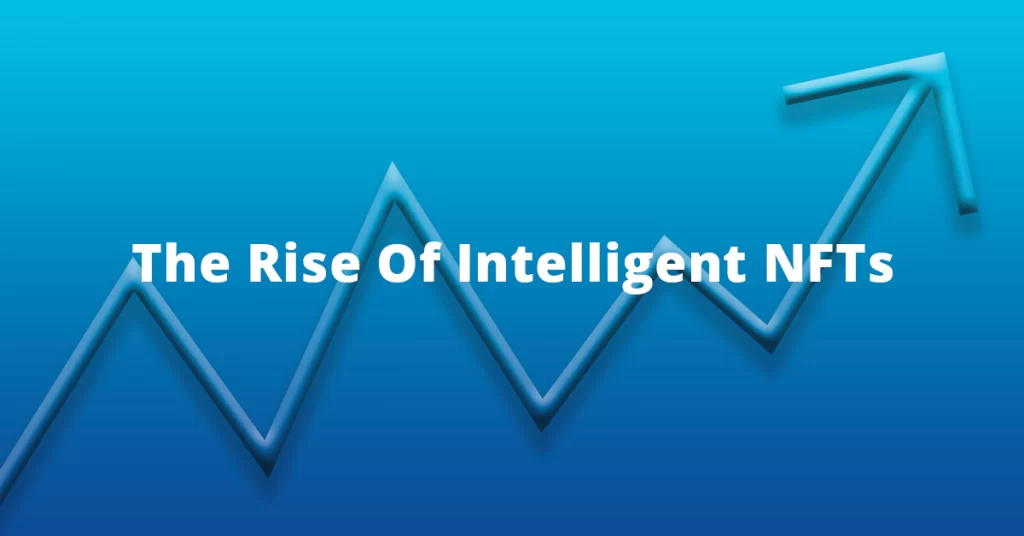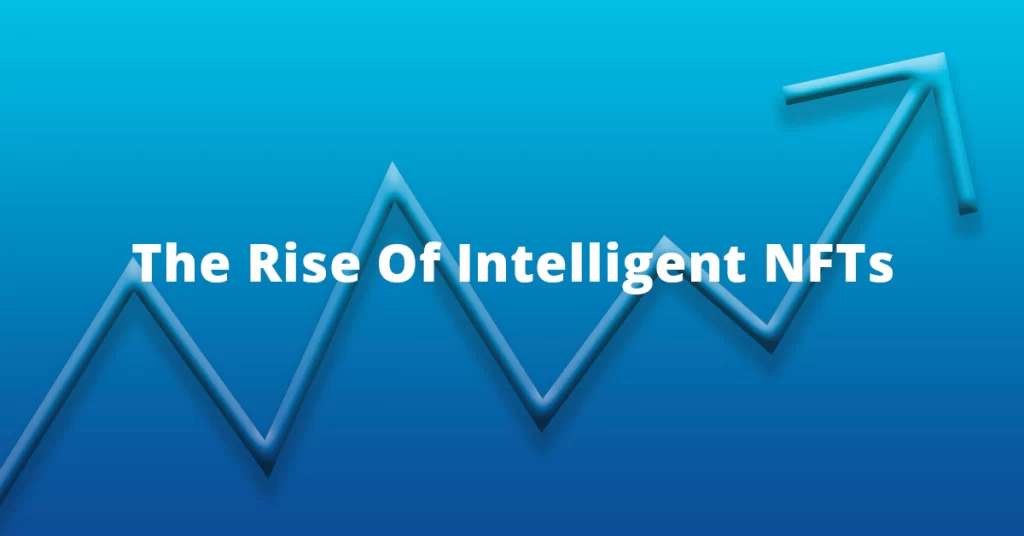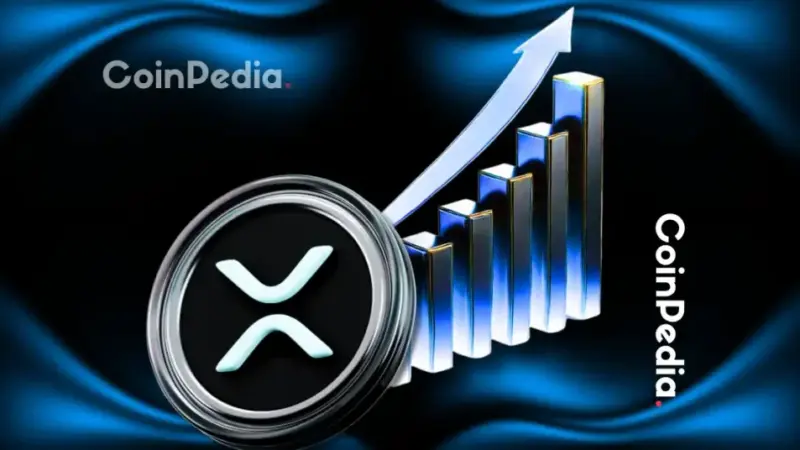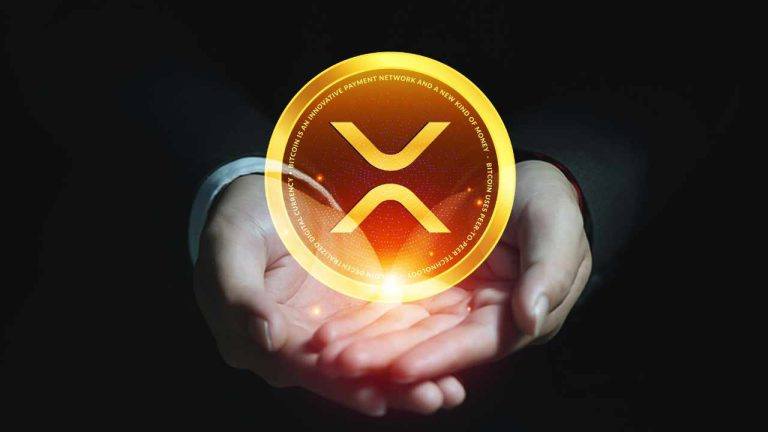How AI Is Bringing Intelligence To NFTs


The post How AI Is Bringing Intelligence To NFTs appeared first on Coinpedia – Fintech & Cryptocurreny News Media| Crypto Guide
NFTs (Non-Fungible Tokens) have evolved at a furious pace since their emergence. Originally launched as static images that appealed to relevant enthusiasts, they’ve since expanded into much more lucrative offerings such as videos, music, artwork, and more.
Their burgeoning popularity saw buyers splash millions to become part of the NFT market. Today, NFTs look set to play a crucial role in emerging technologies and initial iterations of the metaverse and Web 3. We’re all familiar with first-generation NFTs, which focus on properties such as authenticity, ownership, and uniqueness.
The use of AI (Artificial Intelligence) in the blockchain space has been around for a considerable amount of time. Projects such as AIWORK have been using AI to address issues faced by the online video space, so its application in the NFT space comes as no surprise. With AI thrown into the mix, a new type of NFT or intelligent NFTs (iNFT) could signal the next evolution of NFTs, unlocking new capabilities and use cases.
But what are they and how are their features unique? More importantly, how does AI tie into them?
What are NFTs?
Before moving to iNFTs, it’s essential to understand what NFTs are and how they function. An NFT is a cryptographic token that can be used to represent ownership of unique items, enabling the tokenization of assets such as art, collectibles, real estate, digital assets, and more.
Because NFTs are unique, they cannot be shared or exchanged. The identifying information of each NFT is stored in smart contracts, and it is this information that makes each asset unique.
NFTs have been around since the early crypto days, dating all the way back to 2014 where rough concepts were introduced. However, they really started gaining traction in late 2020/early 2021, with top collections such as Bored Ape Yacht Club and CryptoPunks leading the charge to mass adoption.
Defining iNFTs and AI’s Role
We understand that AI refers to machines that hold the capability to mirror human intelligence and perform specific tasks. This technology can perform several cognitive functions such as learning, problem-solving, and reasoning – because of this, it’s seen significant progress over the past decade, finding applications in the crypto and NFT ecosystems.
Intelligent NFTs are next-generation assets that have interactive and intelligent abilities embedded in them, allowing them to learn, adapt, and interact with information and users. From a more technical point of view, iNFTs are embedded with something known as Generative Pre-Trained Transformer 3 (GPT-3). The GPT-3 is a deep-learning tool that produces a language prompt, allowing machines to interact with people.
In iNFTs, the GPT-3 is integrated into the NFT’s smart contract, allowing it to learn from interactions. As a result, iNFTs can combine AI-driven characteristics and avatars with smart contracts, resulting in engaging technology that can be used in several ways to entertain and educate.
Characteristics of iNFTs
iNFTs have created quite a buzz in the NFT space, mainly due to several unique characteristics:
- Self Learning: iNFTs can learn from interactions and unlock new intelligence made available to owners, creators, and the overall network.
- Embedded Intelligence: iNFTs are embedded with a GPT-3 prompt in their smart contract, helping create generative possibilities in interactive conversations.
- Permissionless: iNFTs are universally usable and censorship-resistant.
- Valuable and Fractionable: iNFTs accrue value that can be accessed by the owner and creator of the NFT.
Potential Use Cases for AI And NFTs
AI is being used to generate original art, music, and virtual wearables such as metaverse assets. In fact, AI art NFTs have been labeled as the potential next big wave in the crypto space. We’ve also seen the emergence of AI-based art galleries and several AI artists, where projects are attempting to transition into the metaverse by utilizing AI to create interactive 3D avatars using user portraits.
Intelligent NFTs can create new content independently and integrate dynamic experiences into their smart contract, thanks to their self-learning ability. The more an iNFT interacts with a given environment or user, the more it can learn from its interactions and build a knowledge base. Imagine an NFT capable of reacting to your interactions and adapting to your moods.
One of the most prominent projects involving iNFTs is Alethea AI, allowing users to embed interactions, AI animations, and voice synthesis capabilities into NFTs. Alethea has also sold its first iNFT, an AI-powered avatar called Alice, for a staggering $478,800.
Alice is capable of simulating human speech and interactions. Fuzzle, another intelligent NFT project on Ethereum, can converse with holders about various topics, including politics and crypto.
There are several other ways in which AI and NFTs could potentially influence each other such as:
- NFT Avatars: We already have AI companions in our homes, such as Alexa, that can help assist us with basic tasks. If AI-based avatars for this technology are created, we could see NFTs incorporated into the technology. Implementing NFTs in this space could allow specific avatars for AI companions.
- Intelligent NFT Marketplaces: AI can also bring an intelligent and adaptive approach to NFT marketplaces, which can be used to spot trends in the NFT market, adjust prices and listings, and other market parameters in real-time.
Huge Potential
AI has several use cases and, as mentioned earlier, is being utilized in the blockchain space by projects such as AIWORK. Thanks to AI, we could see iNFTs become the next evolution of NFTs, providing a glimpse of what the future holds if blockchain technology and artificial intelligence are used in tandem.
Intelligent NFTs are only in their initial stages, but as more projects realize the potential of these novel iNFTs, we could see more innovation in the space, signaling an increase in AI and crypto applications.
The future of this space has enormous potential and can change everyday life in the blockchain and NFT spaces.
Disclaimer: This is a Guest Post. Coinpedia does not endorse or is responsible for any content, accuracy, quality, advertising, products, or other materials on this page. Readers should do their own research before taking any actions related to the company.



